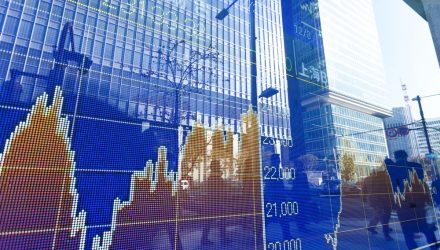While emerging markets (EM) assets pose a plausible diversification option, it’s typically deemed as a risk-on option and retirees have no time contemplating whether or not they want EM exposure—typically not in most cases, especially nowadays in the wake of the coronavirus outbreak. That said, things could be changing with respect to retirees and more EM exposure could result.
A MarketWatch report noted the importance of looking at the cyclically-adjusted price/earnings ratio (or CAPE)—developed by Yale finance professor Robert Shiller. It could be sending a signal that emerging markets are not something that should be ignored, even for investors heading into their retirement years.
“In 2008, in the middle of the Great Financial Crisis (GFC), the U.S. stock market’s CAPE was only slightly more than half that of emerging markets,” the report noted, “Today, in contrast, it’s just the reverse: The U.S. market’s CAPE is 27, versus just 13 for emerging markets.”
“To be sure, the CAPE has been roundly criticized in recent years for falsely sending a bearish message about U.S. stocks,” the report added. “But notice that I am focusing on relative rather than absolute valuations. And on that basis, the CAPE has acquitted itself quite well since the GFC, as you can see from the accompanying chart: Since the end of 2008, the S&P 500 has nearly doubled the return of emerging market equities—14.6% to 7.8% on an annualized basis—as judged by the total returns of the SPDR S&P 500 Trust SPY, +3.03% and the iShares MSCI Emerging Markets ETF EEM, +1.53%.”
Below is the 6-month chart for the MSCI Emerging Markets index:
Broad Emerging Markets Exposure
Investors who want broad exposure to EM can look at funds like the Vanguard FTSE Emerging Markets ETF (NYSEArca: VWO). VWO employs an indexing investment approach designed to track the performance of the FTSE Emerging Markets All Cap China A Inclusion Index. It invests by sampling the index, meaning that it holds a broadly diversified collection of securities that, in the aggregate, approximates the index in terms of key characteristics.
Another fund to consider is the aforementioned iShares MSCI Emerging Markets ETF (NYSEArca: EEM). EEM seeks to track the investment results of the MSCI Emerging Markets Index. The fund generally invests at least 90% of its assets in the securities of its underlying index and in depositary receipts representing securities in its underlying index. The index is designed to measure equity market performance in the global emerging markets. The underlying index will include large- and mid-capitalization companies and may change over time.
For more market trends, visit ETF Trends.


